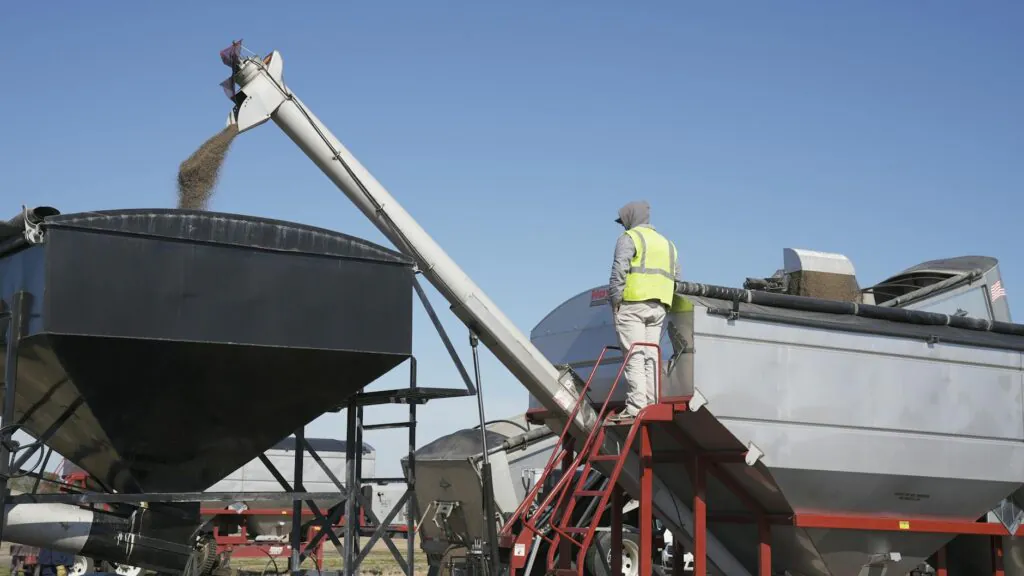When exploring the topic of working at heights and its connection with Regulatory Standard nº 35 (NR-35), it is essential to adopt a broad and enlightening perspective. In the challenging world of construction, maintenance and several other industries, working at heights stands out. Essential for the progress of other areas, it presents significant risks that cannot be ignored.
NR-35 emerges as a compass in this context, stipulating essential guidelines to ensure the integrity and well-being of the professionals involved. This material delves into the essence of working at height, covering not only the inherent techniques and challenges, but also the real experiences and stories of workers who venture beyond terrestrial limits. Special attention will be given to the standards established by NR-35, highlighting its vital importance in creating a safe working environment. Find out more at NR35 Course.
Furthermore, we will discuss the importance of personal protective equipment (PPE), the need for adequate training, and how technological developments have contributed to the protection of workers at heights. Throughout this analysis, we will present a complete guide that not only illustrates the essential safety measures, but also provides an insight into the daily lives of those who daily transcend heights to fulfill their duties.
Therefore, whether you are a sector professional, a security supervisor or someone interested in deepening your knowledge of this challenging segment, this is your ideal space. We invite everyone to join this journey of learning about working at heights and discovering how NR-35 establishes itself as a crucial support for safety in these vital activities.
What is work at height and what does it mean?
Firstly, it is important to understand what working at height means. Imagine being suspended several meters above the ground, at a point where the ground seems far away and the sky seems within arm's reach. It is in this challenging scenario that working at heights takes place, a task not recommended for the most fearful, but rather for those who see the limit of their workplace in the sky.
Currently, working at height is defined as any task performed more than two meters above the ground, where there is a danger of falling. This definition covers a range of activities, from assembling metal structures to cleaning windows in skyscrapers. Each of these professions has its unique characteristics, but they all share the imperative need for safety and precision in their execution.
Regulatory Standards
When it comes to working at heights, safety appears as a crucial element, acting as a protective shield for workers against unforeseen events and dangers associated with these activities. In this context, every small detail assumes vital importance. Similarly, working at height is subject to strict regulations. In Brazil, for example, there is Regulatory Standard nº 35 (NR-35), which defines the minimum requirements for the safety of workers involved in these activities.
Additionally, safety equipment, such as belts, helmets and ropes, are essential and serve as true allies for these professionals, ensuring their protection at heights.
What is the purpose of NR-35 for electricians?
The NR-35 Regulatory Standard is the guideline that defines the essential criteria for what constitutes work at height, with the aim of ensuring the safety and health of the workers involved. For professionals such as electricians, this standard is of utmost importance, given the risky nature of their activities at high heights.
It initially focuses on aspects such as planning, organizing and executing the work, ensuring that all necessary protective measures are strictly implemented. Furthermore, the standard highlights the importance of maintaining a safe working environment, not only to prevent accidents, but also to ensure the efficiency and well-being of workers in their daily activities.
Personal protective equipment
To understand what working at height is, it is crucial to know the necessary personal protective equipment (PPE). In the case of electricians, a series of PPE is essential. The parachutist-type seat belt. For example, it is crucial for preventing falls. Additionally, the use of helmets, insulated gloves and safety shoes is mandatory to prevent injuries and provide electrical isolation.
Depending on the work environment, protective glasses and ear protectors are also recommended to protect against particles and noise. Thus, each PPE plays a specific role in protecting the physical integrity of the worker, emphasizing the importance of correct and continuous use of this equipment.
Inspection of Personal Protective Equipment
As for the ideal frequency for inspecting PPE used when working at heights, it is essential that this is done regularly. A visual inspection before each use is essential to identify possible damage or wear. More in-depth inspections must be carried out periodically, following the manufacturer's guidelines and regulatory standards.
Furthermore, it is vital that these inspections are documented, keeping a history accessible for future reference. These frequent checks ensure that the equipment is always in adequate and safe condition for use.
Main risks of working at heights for electricians
The main risks when working at heights for electricians are quite varied and include everything from falls from different heights to electric shocks and injuries caused by repetitive strain. Falls are especially dangerous and can result in serious injuries or even death. The risk of electric shock, which can also be fatal, is amplified when work is carried out at high heights. Repetitive tasks in uncomfortable positions can cause musculoskeletal injuries.
Therefore, it is essential to be aware of these risks and adopt the necessary preventive measures to ensure safety during work. To identify and control risks when working at heights, you need to adopt a methodical approach. Initially, a detailed risk analysis must be carried out to identify possible hazards in the workplace. Next, it is important to implement control measures, such as the use of fall protection systems and regular maintenance of safety equipment.
Furthermore, it is essential that workers receive ongoing training on safe work practices, ensuring that risks are effectively controlled and minimized. One of the ways to get training is to do the Work at Height Course.
The importance of training for working at height
To specialize in working at heights, rigorous training is essential. This learning process goes beyond simply using equipment; it involves developing an appropriate mindset and physical and mental endurance. Training programs often include emergency simulations in which workers learn to act effectively under pressure. Furthermore, physical and psychological preparation is essential to overcome the challenges that heights impose.
The importance of training for working at heights is unquestionable, especially for professionals such as electricians. This training provides essential knowledge on the proper use of PPE and safe work techniques. Additionally, training covers emergency procedures and first aid, equipping workers to react effectively in critical situations.
It is also critical to raise awareness of the risks associated with working at height, emphasizing the need to strictly adhere to safety regulations.
Physically prepared for working at heights
For electricians, being physically prepared for working at heights is as crucial as technical mastery. A regular exercise routine focused on strengthening muscles and improving cardiovascular fitness is essential.
Furthermore, stretching before and after work significantly contributes to injury prevention. Another vital aspect is maintaining a balanced diet and adequate hydration, factors that directly influence performance and resistance during work activities.
Therefore, maintaining good physical shape not only reduces the risk of injury, but also enhances efficiency and safety when working at height.
Planning work at heights for electricians
Planning for work at height carried out by electricians must be done with great attention to detail. Initially, a careful risk analysis is essential to identify potential hazards and establish appropriate control measures. Next, it is necessary to draw up a work plan that details the procedures to be followed, the necessary tools and emergency plans.
Furthermore, it is essential to ensure clear and effective communication between all team members, ensuring that all vital information is properly shared. This thorough planning not only increases the level of safety, but also contributes to work efficiency.
Communication between teams
As for communication and coordination between the team when working at heights, these are key elements for the success and safety of operations. It is essential to establish an effective communication system, which can be based on visual signals or electronic communication devices.
Safety meetings before activities begin are crucial to align all team members on the procedures and safety measures to be adopted. Furthermore, the presence of a safety coordinator, responsible for supervising and guiding the team during work, is extremely important.
This efficient coordination is vital to preventing accidents and ensuring that work is carried out safely and efficiently.
What is the supervisor or safety coordinator for working at heights for?
The safety supervisor or coordinator plays a fundamental role when it comes to working at height. One of your main responsibilities is to ensure that all safety standards are strictly complied with and that workers receive the appropriate training for their activities.
Additionally, it is their role to supervise the correct installation and use of fall protection systems. This professional also plays a vital role in assessing the risks involved and implementing appropriate control measures.
Your active presence and continuous supervision are essential to creating and maintaining a safer and more efficient work environment, especially in activities carried out at heights.
Technologies and innovations in working at height
Technology has become an indispensable partner when it comes to working at heights. Nowadays, the use of drones and robots is becoming increasingly common to carry out certain tasks, bringing an additional level of safety to these activities.
In the context of technological innovation, drones are a notable example. They act like mechanical birds, making it easier to inspect hard-to-reach areas by transmitting real-time images to professionals on the ground. Similarly, augmented reality equipment offers the possibility of simulating tasks before they are actually carried out, helping to reduce the risks associated with working at heights.
Conclusion
To conclude, it can be said that working at height is a harmonious combination of art, bravery and science. These professionals, who perform tasks that many do not dare to attempt, reaching heights that touch the sky, deserve our deep admiration and respect.
They exemplify a unique ability to maintain safety and practicality even while operating in challenging conditions, always keeping their feet firmly anchored in reality.




